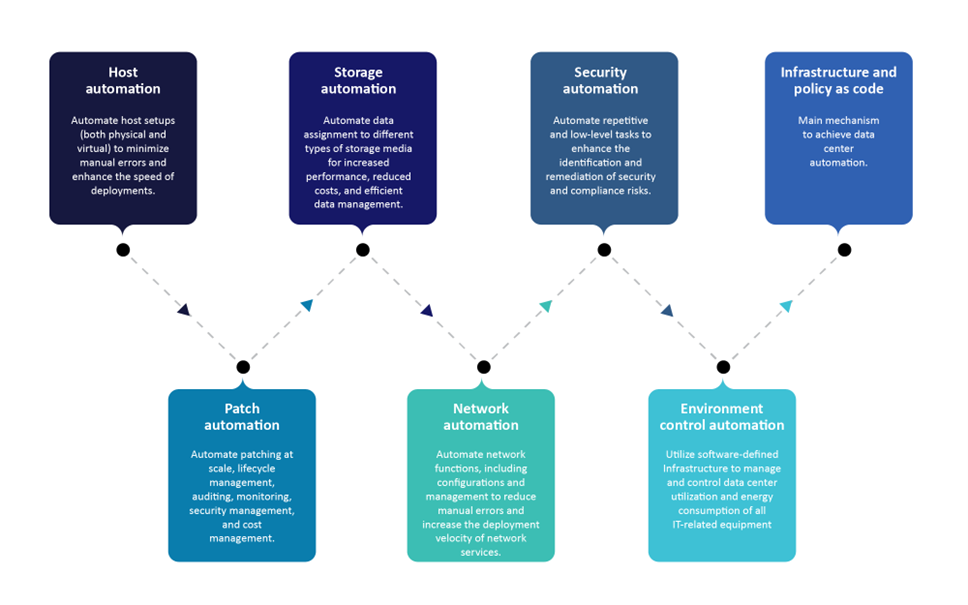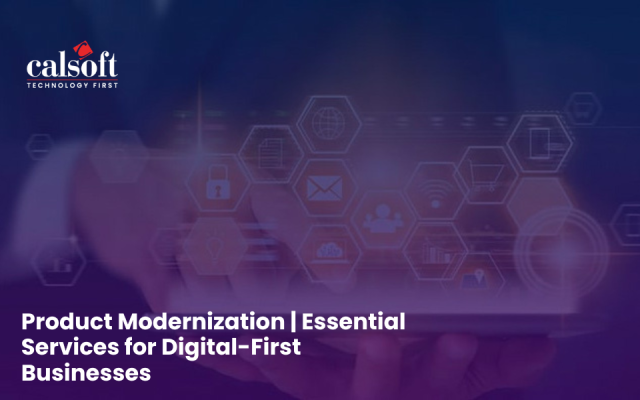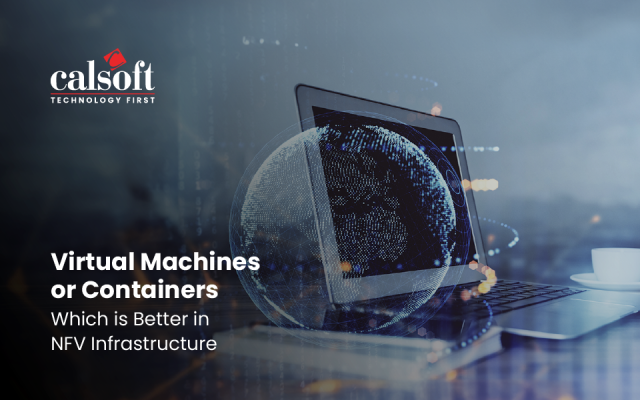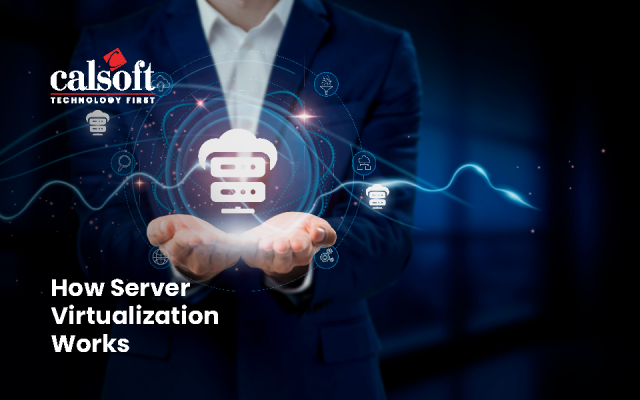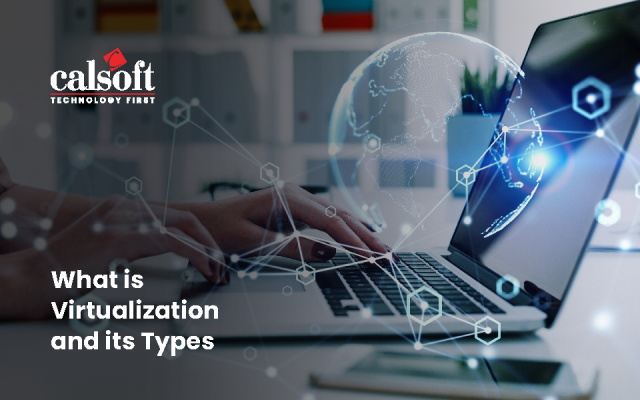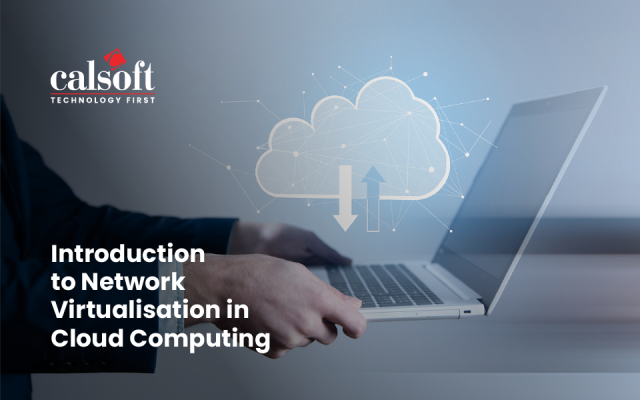Data centers have evolved! From the physical walled entity to a virtualized component integrating with cloud-based systems!
Data, as we know, plays an essential role in building business strategies. As the digital landscape transforms and expands, so does the massive amounts of data categorized under structured and unstructured segments. This generated data requires storage, sorting, and analysis to provide insights and foster innovation and creativity.
However, to manage the increasing complexity of data types, data center operators who manage costs and maintain high-quality services must seek operational efficiency. From being purely hardware-focused to being software-defined entities, data centers have transformed from their earlier roles of storage warehouses. From manual configuring, provisioning, monitoring, and managing the systems to leveraging automation to increase efficiency, seamless workflow, and agility for real-time analysis. This has led to upgrading and streamlining data centers.
This blog explores the key enablers for data center automation and integrated management that can transform data center operations.
Evolution of Data Center
Data centers are not merely setups housing data but carry out several operations to maintain and process data. Today, Data centers are the nerve centers from which data can be accessed geo-spatially. Real-time analysis can be done on stored data using automation and AI tools. Thus, while data is being processed in real-time, maintenance of this data, the networking infrastructure, and security are monitored and remotely managed, making business operations seamless. From a traditional warehousing physical facility to moving to the cloud, data centers have evolved into a transformative force.
The result is the introduction of newer technologies and approaches, using automation to manage on-premises as well as cloud infrastructure to process and integrate the various IT environments effectively.
According to a Gartner report, “Data center functions are no longer centralized in a physical location, but rather deployed to meet complex business requirements by utilizing cloud, data center, colocation, and edge deployment locations as shown in the below image.
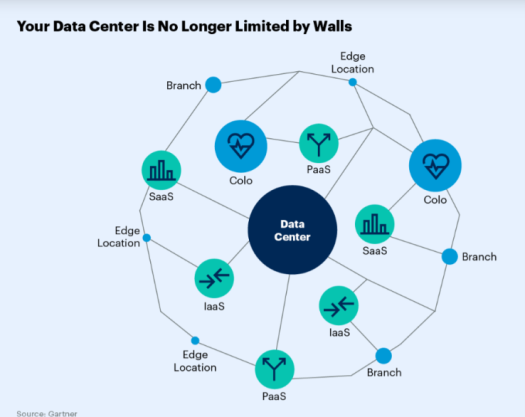
Today’s data center architecture has transitioned from on-premises physical infrastructure to a hybrid model with some part in the cloud. It integrates on-premises systems with cloud infrastructures, where networks, applications, and workloads are virtualized across several private and public clouds. The change has impacted the architecture of data centers. Now, the components are no longer co-located and only accessible over the public Internet.
Data center architecture varies depending on the type of data center. These types include, managed, enterprise, hyperscale, colocation, cloud computing, and edge data centers. Data centers are also divided into various tiers such as tier I, tier II, tier III, and tier IV. The evolution of data centers brings challenges for maintaining and managing the infrastructure environment. This can be resolved by integrating advanced data center infrastructure management tools, and the introduction of intelligence in large-scale data center management. Infrastructure-as-code and software-defined data centers can overcome the restrictions of traditional data centers by automating data center management and deployment. Let’s explore how data center automation and integration benefits businesses.
Data Center Automation
Automation in Data centers is not just a buzzword but has become an operational necessity!
The use of software to automate manual tasks such as provisioning and deploying virtualized workloads, configuration management of servers, patching or updating operating systems, moving data between applications, and application deployment, has brought in efficiency, improved uptime, and reduced costs by eliminating manual intervention.
Virtualization is important in data center automation as it dynamically supports data center operators to create virtualized machines (VMs), allocate resources, manage workload migration across servers, and provide scalability when the need arises. You can read how Calsoft supports data migration using virtualization and migration of workloads. Server virtualization helps speed provisioning, improves system use, and reduces hardware expenditures.
On the other hand, a software-defined data center (SDDC) architecture can significantly improve IT agility. SDDC refers to a data center where infrastructure is virtualized through abstraction, resource pooling, and automation to deliver Infrastructure-as-a-service (IAAS). Thus, by pooling infrastructure resources, standardizing management tools across infrastructure layers, and enabling policy-driven provisioning, IT groups can respond quickly to new requests for IT resources. SDDC also helps lower costs in the long term. Further, when implementing an SDDC on cloud-based infrastructure, the time, and risks of rearchitecting an existing infrastructure can be reduced.
However, unscheduled downtime, problems securing virtualized workloads, inability to manage big data (including data from the Internet of Things), and poor server management can lead to a competitive disadvantage. To overcome these, automation of tasks becomes crucial for the success of data centers.
There are several categories of automation that can be employed by data centers.
| Automation Categories | Description |
| Infrastructure Automation | Helps provision and de-provision virtual machines across on-premises and cloud. |
| Service Orchestration & Automation Platforms (SOAPs) | SOAPs can automate applications or platforms on-premises and in cloud or container-based systems. According to Gartner, SOAPs are a force multiplier to maximize ROI |
| Network automation & Management | Solutions that typically interact with routers, switches, firewalls, application delivery controllers, service provider components (WAN circuits), and cloud provider services (VPCs and load balancers, for example). This solution category allows organizations to reduce network outages and downtime by making network changes across hundreds, thousands, or more devices in short periods. |
| Remote Monitoring & Management | A class of tools that discover & manage devices, monitor for problems and take automated action |
| Data Center Infrastructure Management (DCIM) | A class of applications that monitor equipment utilization, energy consumption, air conditioners, and facility infrastructure components. |
| Cloud –native Schedulers | Cloud schedulers may have some limitations, but automate anything from cloud infrastructure to data pipelines. |
Once the automation categories are set, the next step is how and where to automate and bring efficiency to the process and system.
Automation in Data Centers: The How and Where to Automate
In today’s digital landscape, automation is the key that unlocks doors for a seamless and efficient business strategy. It is very critical to put in place an automation strategy for certain key elements that make up the Data center infrastructure. The image below illustrates the key elements listed for data centers to achieve its operational efficiency.
Host Automation: Using a multi-layered approach to host provisioning, whether using physical servers or Virtual machines, automation can maximize the efficiency and versatility of your data center operations.
Patch Automation: Patching when done manually is a nightmare for data center administrators. But automation, updates, and patches ensure every system is current.
Storage Automation: Employing automation tools that support policy-driven storage tiering and provisioning to critical data, applications, and underlying systems can help maintain costs and engage with more frequently accessed data rather than rarely accessed data.
Network Automation: Network automation strategy, based on Software-Defined Networking (SDN) ensures interoperability among SDN solutions, automation tools, and APIs fostering seamless communication among various network components.
Security Automation: automated security can identify breaches, quarantine affected nodes, apply corrective patches, or even trigger a complete lockdown. No manual intervention is required minimizing human intervention risks. Although a manual fallback is always required in exceptional situations.
Environmental Control Automation: To minimize energy consumption and prevent overheating malfunctions, automating the power and cooling system is critical. An evolving concept, Software-Defined Infrastructure (SDI) offers a unified control plane for your entire infrastructure and extends virtualization concepts including abstraction, pooling, and automation to all data center resources and services to achieve an IT as a service (ITaaS) model. It has its complexities, so caution is advised.
Infrastructure (IaC) and Policy (PaC) as a code: IaC transforms tedious, manual infrastructure management tasks into refined, error-resistant, automated code. PaC reinforces IaC by ensuring the consistent application of system and security policies. Together, they lead to reduction in configuration drift and a consistent, predictable environment compatible with continuous integration and delivery pipelines.
Benefits and Challenges of Automation of Data Centers
Data center automation can be a double-edged sword: while it can provide significant advantages in terms of cost-effectiveness, operational efficiency, and data governance, it can also present challenges in terms of security, customization, and human resource management. We need to remember that it is not merely about automating tasks but about how we engage with data in an enterprise context. Let’s delve into the key challenges and benefits involved in data center automation.
Benefits:
Effective data center automation manages and executes tasks without human intervention – from server provisioning and configuration to workload management and monitoring. Tasks that are repetitive, routine, or prone to error, with automation, can make data center operations more efficient.
Improved Operational Efficiency: Automating routine tasks allows data center personnel to focus on more strategic and high-value activities.
Reduced Human Error: Eliminates the manual chokepoints and facilitates greater adaptability.
Faster Incident Response: Real-time analytics in cases like fraud detection, real-time marketing adjustments, or operational optimizations.
Scalability: As demand grows, and that will happen given the immense growth of data, automation supports scalability ensuring continuity in operations without manual intervention.
Cost Savings: Initial investment could be costly, but in the long run a decrease in manual labor and a refocus on strategic tasks, can be beneficial to the ROIs.
Enhanced Security: A twin-blade situation, but automation can proactively identify threats before they become a menace and ensure timely action for data security.
Challenges:
Despite the benefits that automation brings to Data centers, there are certain challenges that data centers may still have to overcome. The heterogeneous systems and technologies that are part of the data centers may make it difficult to integrate new automation tools seamlessly leading to security and other issues. It is advantageous to know these challenges before strategizing on automation in data centers.
Technical challenges & resource intensive initially: The challenge lies in designing systems architecture with flexibility and scalability to support the ever-changing needs of end-users and applications.
Compliance & Security: Layers of automation lead to vulnerability, especially for organizations bound by stringent data governance and compliance regulations.
Customization: One size fits all does not always work given the unique business needs that may be prevalent in some organizations.
Expense Challenge: The need to convert from capital expense (CAPEX) to operating expense (OPEX) given the rigidity of the CAPEX approach can make it difficult to handle the modern “on-demand” needs of developers and end-users.
Interoperability: Newer technologies, such as cloud computing and virtualization, can when integrated with legacy systems, bring their own set of complexities and problems.
Upskilling: Lack of trained resources could be an issue that requires keeping up to date with how to scale and monitor the integration of new AI tools and technologies.
Ethical Challenges: Automated systems may inadvertently introduce bias into analytics and decision-making processes.
Balancing Business Strategies and Compliance: Mindful assessment of the data environment, business needs, and compliance requirements to determine the level of automation required should be considered for a more advantageous and sustainable automation.
Sustainability: The increasing energy consumption of data centers gobbling up resources and energy can be problematic. However, there is always hope for a more sustainable approach when using AI tools in automation.
Thus, the adoption of automation technology can enable routine tasks, reduce human error, and free up IT staff for more strategic efforts. However, it is important to acknowledge and address challenges such as security concerns, skills gaps, and the need for better planning and management.
Data Center Integration: Data Center Management and Sustainability
There is no doubt that automation is a critical enabler for enterprises to stay in this competitive market. Additionally, integration between data centers, application of automation software, especially with legacy systems, and use of AI tools and technologies, are crucial for a seamless workflow.
The goal of data center integration is to combine different hardware and software components in a data center environment in a seamless manner. This procedure lessens compatibility problems, cuts down on downtime, and improves performance all around. Datacenter integration helps businesses enhance productivity and adjust to changing needs by optimizing systems and scaling resources. Datacenter integration focuses on the integration and optimization of resources.
There are 3 simple ways for integration to provide for effective workflows:
Use of APIs: Usage of Application Programming Interfaces (APIs) can help connect disparate applications and systems allowing different software systems to communicate with each other, enabling seamless workflow and thus speeding up the process of integrating the automation tools.
Centralized Control: Monitoring and managing data center operations from a centralized control panel provides a comprehensive view of operations, making it easier to identify issues, manage processes, and make informed decisions.
Event-based automation: Helps manage workloads and involves setting up automation rules triggered by specific events or conditions. This enables the system to respond quickly and efficiently to changes in the data center environment.
An Integrated Data Center Management (IDCM) is known to handle the complexities involved in integrating hardware, software, and other critical infrastructure. The IDCM platform provides for the integration between cooling/power systems and servers/ workloads that run within data centers. This provides organizations with transparency and control of their infrastructure, reduces cost, improves uptime and security compliance, and supports energy savings of data center operations, the last crucial factor of the Sustainable Development Goals (SDG) policy. The following image shows the reference framework of a modernized Data Center.
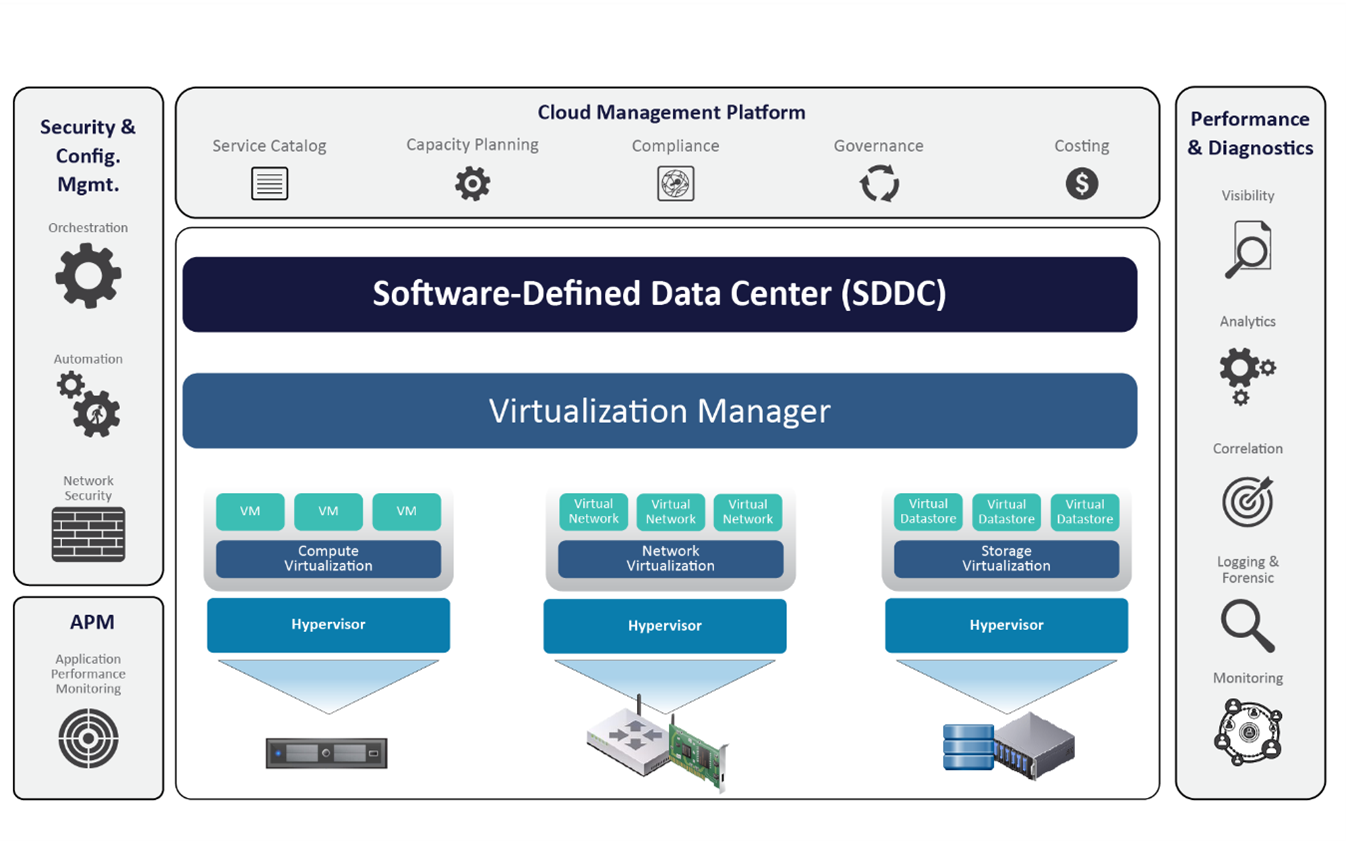
According to Gartner, 75% of all organizations will have a data center infrastructure sustainability program by 2027, a significant increase from the 5% the analyst firm predicted earlier in 2022.
Data centers are gearing toward being more energy efficient and reducing carbon footprint. The global carbon-neutral data center size is expected to reach USD 17.12 million in 2028 and register a CAGR of 21.2% during the forecast period.
One such approach toward moving to a carbon-neutral environment is integrating a Building Automation System (BAS) with a Data Center Infrastructure Management System (DCIM). When Data centers leverage the power of these innovative technologies, the benefits accrued in terms of optimal performance and reliability can be achieved by addressing issues when real-time monitoring occurs. Downtime can be addressed using predictive maintenance when the above technologies are integrated into the workflows of data centers. Above all, sustainability is ensured when several energy-efficient measures, such as using free cooling when possible, optimizing HVAC (heating, ventilation, and air conditioning) settings, and consolidating servers brought in by these technologies.
Transformative Solutions
Data centers are reinventing themselves with automation and integration of technologies like BAS and DCIM. The right mix of on-premises and cloud storage can help streamline data centers where automation eliminates manual chokepoints and facilitates agility. With automation, new AI tools and Machine learning algorithms are being introduced leading to complexity in data management and its subsequent analysis and real-time insights.
We, at Calsoft, bring our AI-driven solutions that provide for end-to-end management of data center servers including management of converged infrastructure, physical servers, operating systems, and virtualization hypervisors. Our solutions automate administrative tasks and address issues on a timely basis.

